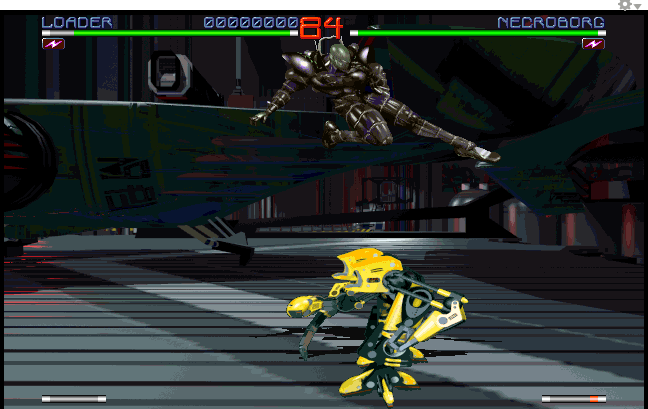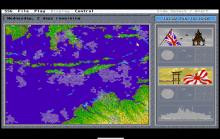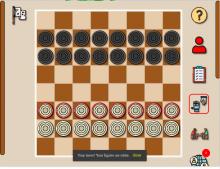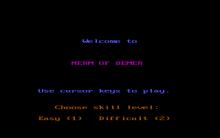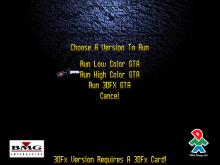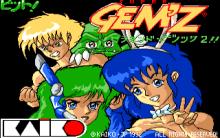Rise 2: Resurrection
How to play Rise 2: Resurrection
Each game uses different controls, most Amiga games use both mouse and keyboard.
Rise 2: Resurrection Description
Rise 2: Resurrection is a computer game developed by Mirage Media and released by Time Warner Interactive in 1996. The game is a sequel to Rise of the Robots. The press was quite divided about it, the game receiving both very good and very bad grades.
Coton, the cyborg that went on a mission to eradicate the Supervisor from the previous game, faced the Supervisor... but as he thought he was about to defeat her, she enveloped him completely, took over his bionic body instantly and ripped his consciousness out of it. Coton the cyborg had failed. The Supervisor had completely assimilated him. His body was dismantled and his brain assimilated by the giant robot complex of Electrocorp, his thought patterns cloned to bolster the artificial intelligence of the Supervisor, feeding selected robots with shards of human-like thought. Some of them, becoming able to think by themselves, became able to improve their own design, and more and more robots were sent out, cut from the neuronet of the Supervisor, assumed to be able to think by themselves enough.
Electrocorp scientists didn't know what happened to Coton, thought they hoped he was still alive somewhere. However, they now had to take drastic action to counter the Supervisor. Not only the Electrocorp building would be taken over, the Supervisor would now target the city, maybe the world. They couldn't afford to destroy the building for the impact on the public would be too high if what happened was to be publicly known. While they didn't have time to prepare a counter-virus to eradicate EGO, the information Coton sent them gave enough information to allow them to create a little self-modifying piece of code that would each robot victim behave independently from their leader, and the EGO virus would do the rest. This was dubbed the Anarchy Virus, and as it was released to the main building of Electrocorp, chaos ensued. Robots waged war against each other, disconnecting from the neuronet, quickly depleting the numbers of the Supervisor's army, changing them into erratic machines seeking absolute power, each the center of its own universe.
Coton had found some comfort in his new position. Power and illusion had been drugs, more or less seduced by the Supervisor, strangely stimulated by the thought that he was at her complete mercy. But when the A-virus kicked in, Coton was shocked. He realized what happened to him, and in the middle of the anarchy, with the Supervisor tending to her own army dismantling itself, Coton realized he had to act quickly. If he could upload his mind to one of the robots, it would probably take the Supervisor two hours to discover that he was gone and he could try to flee. Or maybe have another go at her ! Now, which robot should he choose...
The game features 18 standard characters, plus 8 (or 10) others hidden. The hidden characters tend to be stronger than the other ones, and some are very easy to unlock while others are much harder, but eight of them are clones of the standard characters with just about the same moves and different graphics.
The seven robots of the original game are all returning with new graphics and moves, six of which standard (the Supervisor is a hidden character). Aside from the original Rook, all have an offspring robot which looks like a heavily modified version of the original (including the Supervisor's own modified version, V1-Hyper) with different moves and six all-new robots.
As opposed to its predecessor, now that the scenario allows it, Resurrection allows the players to pit any robot against each other like any normal fighting game, both in one- and two-players mode. Also, the players can choose amongst 256 different palette rotation for each robot. There are five different types of projectiles - think fireballs - and each robot has one.
The game features a much richer fighting experience than its predecessor. Each robot has its own original moves, and Mortal Kombat-inspired fatalities along with the ability of stealing and use a defeated robot projectile. Also, each of the robots enjoy a devastating super-move that can be used when the power bar is full, to the likeness of other fighters of the time. The game also features a combo counter system, named Chaos. The controls are quite standard for a fighting game, and non-humanoïd robots adapt their moves to the punch/kick model.
To each robot corresponds one of the 28 fully raytraced and animated stages, and in one-player mode the player would face each robot in its own stage, while two-player mode allows player to choose one of them or to leave it at random. Each stage is graphically tuned to its corresponding robot, and some stages feature traps that players could use to take an advantage against their opponent. The traps also tend to match their owner robot's characteristics: as the stage for Steppenwolf, the gun-wielding robot, features a trap that fires bullets, the stage for Vandal, the saw-wielding robot, features a trap with a saw. Traps vary in their place, effect and trigger mechanism; some of them activate in a defined place and time, as the crane chain periodically flailing throughout the NecroBorg's stage, some of them activate when one of the opponent is pushed to it, like the saw in Vandal's stage which triggers when an opponent is pushed against the left border of the stage.
The graphics for the first game had been greatly praised by the critics for being several years ahead of their time, but Resurrection still improves a lot over them. For platforms that supported it, the screen resolution had been taken up (800x600 on PC, which was extremely rare for a game of the time). Animation speed had been increased, rendering quality largely improved, and Resurrection was maybe even further ahead of its time than the first game, graphically speaking. Hits would give off metal scraps and thundery arcs would progressively run over the body of robots with their health bar deteriorating. The graphics of the game also features pixel-precise parallax scrolling of the stages.
The in-game music features hard-rock themed music by Tom Grimshaw at Mirage, and a theme by Queen's guitarist Brian May entitled "Cyborg". Also, Rise 2 improves on its predecessor with more full-screen rendered movie sequences.
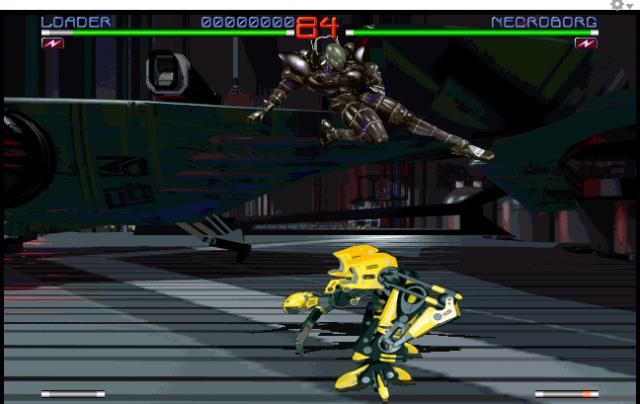
Rise 2: Resurrection - additional information







